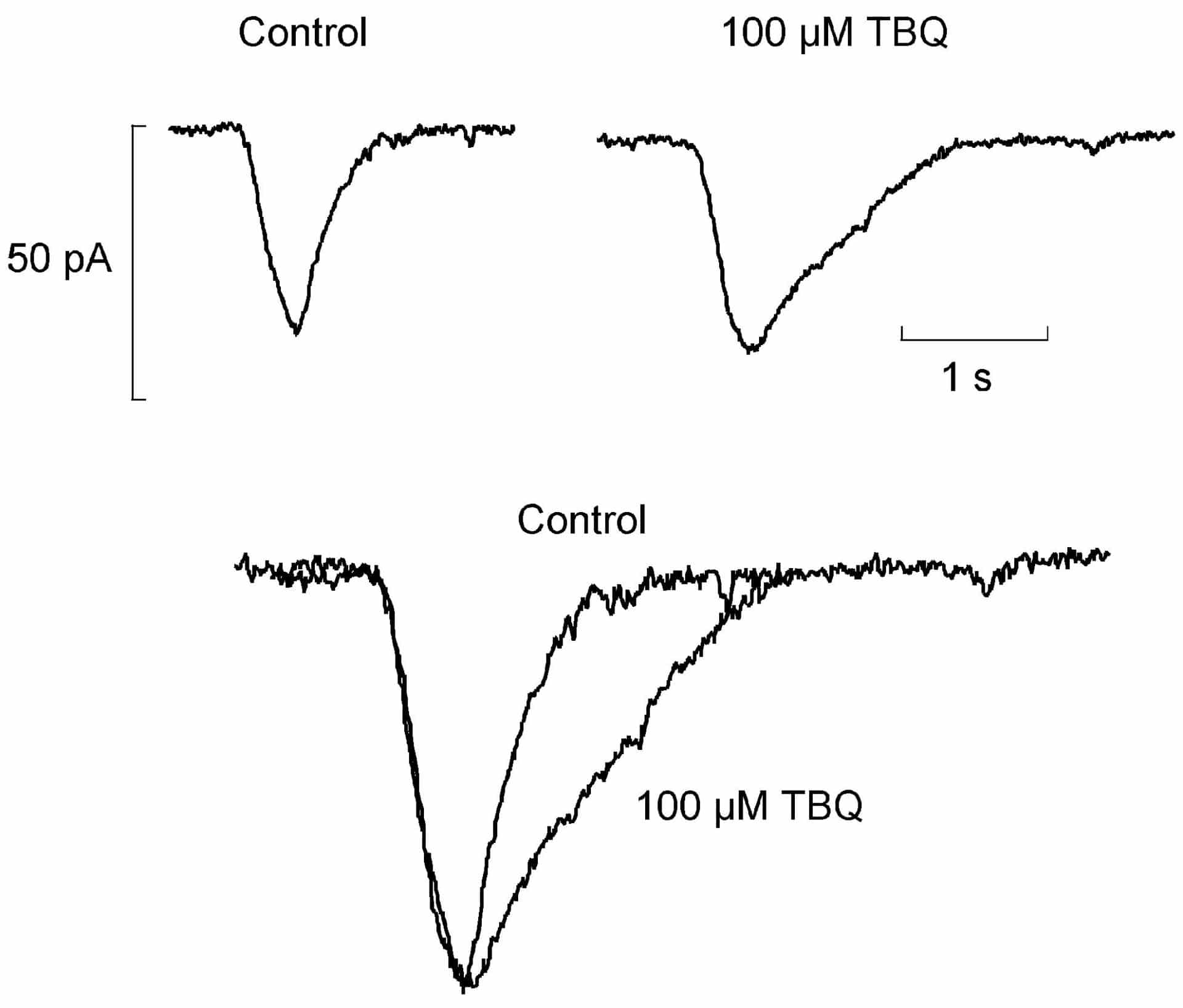During metabolic inhibition in Ca2+-overloaded cardiac myocytes, the frequency of waves of Ca2+-induced Ca2+ release (CICR) is decreased and their duration prolonged (Overend et al. 2001). These effects are due to decreased opening of the Ca2+ release channel (ryanodine receptor) and decreased activity of the SR Ca2+-ATPase (SERCA), respectively. We have previously characterized the effects of inhibition of CICR alone (with tetracaine) on the properties of waves of CICR; waves are less frequent but larger and so generate more efflux of Ca2+ from the cell (Overend et al. 1997). In the present work we have investigated the effects of inhibition of SERCA alone in rat ventricular myocytes.
Ventricular myoctyes were isolated from the hearts of rats that were humanely killed. We used 2,5-di-tert-butyl hydroquinone (TBQ, 100 µM) to inhibit SERCA to study the effects on wave propagation. The current records in Fig. 1 are from a Ca2+-overloaded rat ventricular myocyte. Each trace shows Na+-Ca2+ exchange current activated by a wave of Ca2+ release propagating along the cell. The amplitude of the wave-associated current is unaffected by inhibition of SERCA but wave duration is increased. In TBQ mean current amplitude was 107.6 ± 6.0 % of control (mean ± S.E.M.; P > 0.25, Student’s paired t test).In these experiments inhibition of SERCA is not complete and waves persist at a low frequency in TBQ. However, as is obvious from Fig. 1, each wave generates more efflux presumably because intracellular Ca2+ remains elevated for longer due to slower SR uptake. The mean current integral in TBQ increased to 230 ± 14 % of control (mean ± S.E.M.; P < 0.001, n = 5). The greater efflux of Ca2+ depletes the SR more, requiring more time for refilling. Therefore, Ca2+ efflux generated by waves is increased by inhibition of CICR or SERCA. Moreover, the increase in wave period seems to depend only on the increase of efflux however it has been brought about. Wave period increases proportionately with Ca2+ efflux generated by the waves whether CICR or SERCA is inhibited.
We conclude, therefore, that even with SERCA partly inhibited, the time for refilling of the SR between waves is limited by influx of Ca2+ from outside the cell rather than uptake of Ca2+ by SERCA.
This work was funded by grants from the British Heart Foundation.

